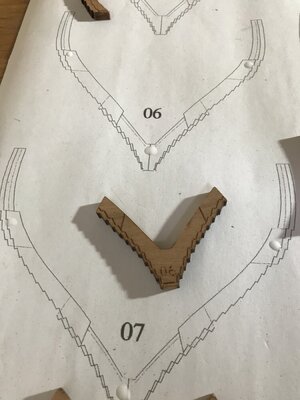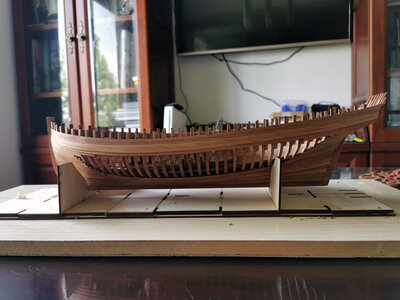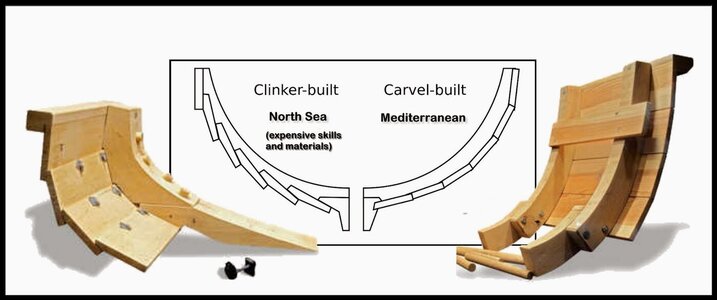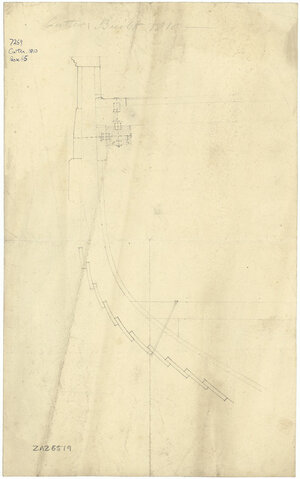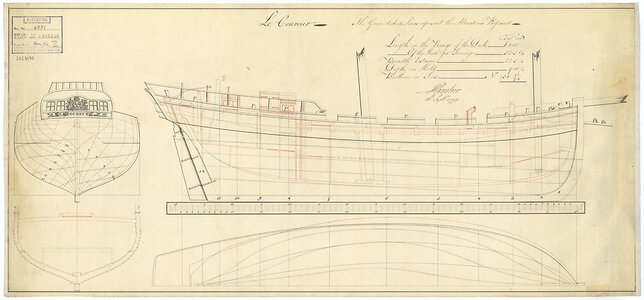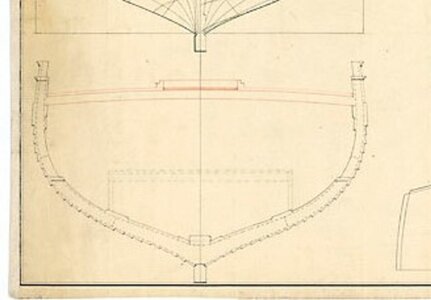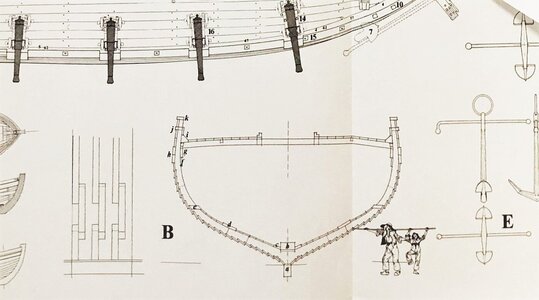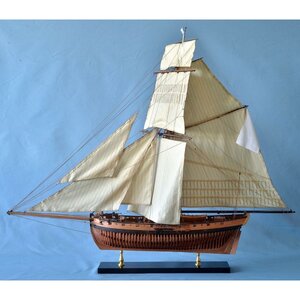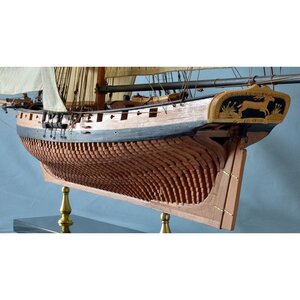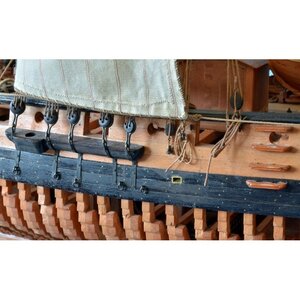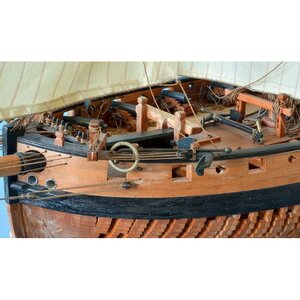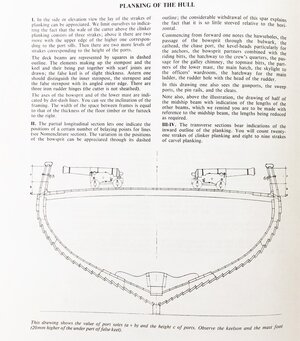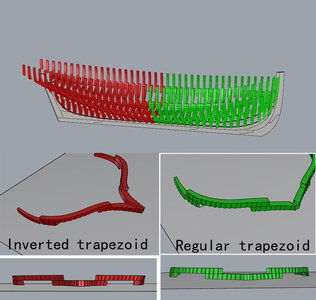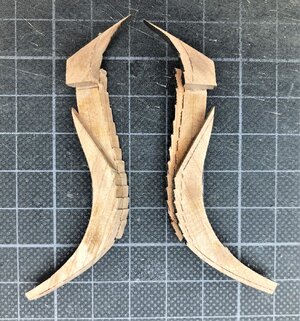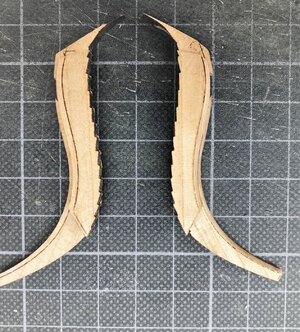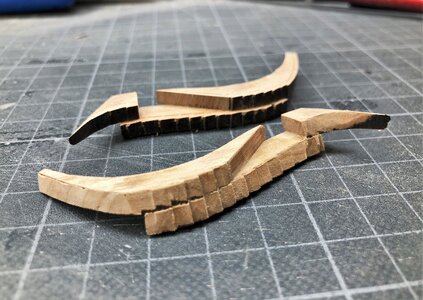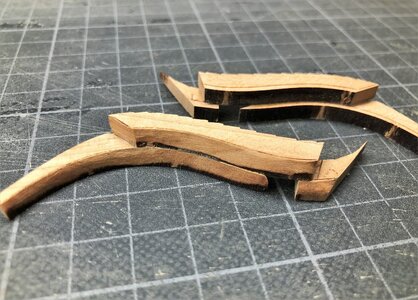Hallo friends,
the french lugger like the Le Coureur had clinkered hulls.
The following sketch is showing the principle difference between clinker and carvel planking (taken from boat building, but the same principle - even more important when the planking is thicker like on boats)
View attachment 184197
the frames of the original ship had such steps - we take a look at the NMM drawings
View attachment 184194
No scale. Plan showing a part section illustrating the under-deck knee support fixtures for an unknown clinker-built Cutter (1810

collections.rmg.co.uk
View attachment 184195
View attachment 184196
Scale: 1:48. A plan showing the body plan with stern board and decoration and name on stern counter, sheer lines with inboard detail modifications proposed in green ink, longitudinal half-breadth, and midship section showing the clinker framing, for
'Coureur' (1778), a captured French lugger, as modified to an 8-gun Schooner. Signed by John Henslow [Master Shipwright, Plymouth Dockyard, 1775-1784; later Surveyor of the Navy, 1784-1806].
Than we can also take a look at the drawings made by Jean Boudriot in his monograph of the Le Coureur - although this monograph did not include all frame drawings, but there is a cross section shown
View attachment 184198
Planset Review: Lugger LE COUREUR - 1776 in scale 1:48 by Jean BOUDRIOT & Hubert BERTI available from ancre in different languages -> english, french or italian https://ancre.fr/en/monograph/50-monographie-du-coureur-lougre-1776.html#/langue-francais Excerpts from the drawings taken from...
shipsofscale.com
and if we take a look at Jean Boudriot monograph / drawing set of the Le Cerf, which had also a clinkered hull.
Here take a look at the beautiful build model by M. Frölich
View attachment 184201
View attachment 184202
View attachment 184200 View attachment 184199
Excerpt from the booklet of the Monograph by Jean Boudriot and Hubert Berti
View attachment 184203
Planset Review: Le CERF Cotre 1779 - 1780 in scale 1:48 by Jean BOUDRIOT & Hubert BERTI available from ancre in french, english or italian language https://ancre.fr/en/monograph/34-monographie-du-cerf-cotre-1778.html#/langue-anglais/download-solo_libro_en_espanol Excerpts from the...
shipsofscale.com
Long explained an answer for a short question - Sorry for this!!!
Summary:
The steps in the frames can stay - only with more accurate sanding.
The frames of the kit are prepared very accurate and according the correct technique used at this time





